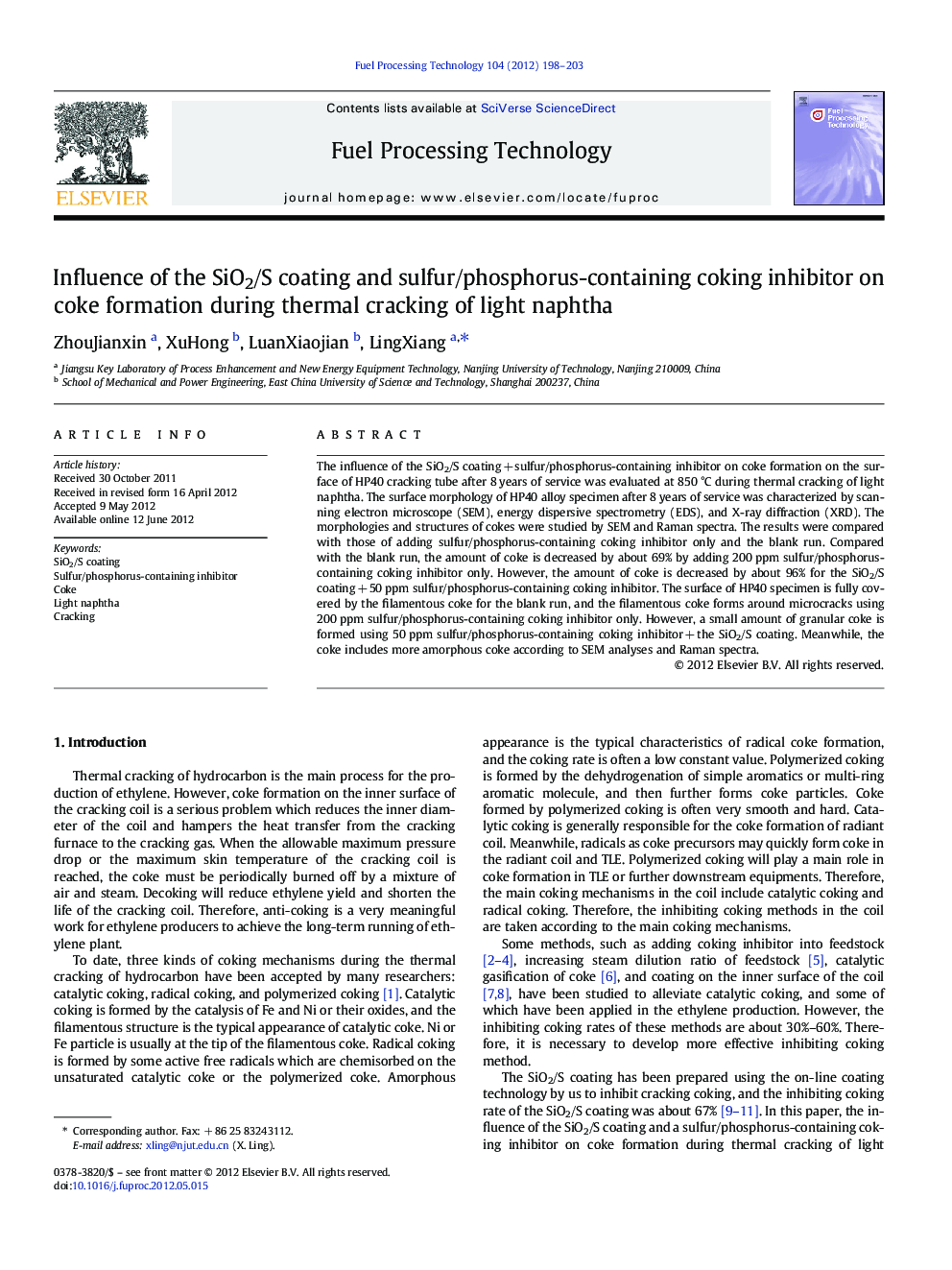| Article ID | Journal | Published Year | Pages | File Type |
|---|---|---|---|---|
| 210270 | Fuel Processing Technology | 2012 | 6 Pages |
The influence of the SiO2/S coating + sulfur/phosphorus-containing inhibitor on coke formation on the surface of HP40 cracking tube after 8 years of service was evaluated at 850 °C during thermal cracking of light naphtha. The surface morphology of HP40 alloy specimen after 8 years of service was characterized by scanning electron microscope (SEM), energy dispersive spectrometry (EDS), and X-ray diffraction (XRD). The morphologies and structures of cokes were studied by SEM and Raman spectra. The results were compared with those of adding sulfur/phosphorus-containing coking inhibitor only and the blank run. Compared with the blank run, the amount of coke is decreased by about 69% by adding 200 ppm sulfur/phosphorus-containing coking inhibitor only. However, the amount of coke is decreased by about 96% for the SiO2/S coating + 50 ppm sulfur/phosphorus-containing coking inhibitor. The surface of HP40 specimen is fully covered by the filamentous coke for the blank run, and the filamentous coke forms around microcracks using 200 ppm sulfur/phosphorus-containing coking inhibitor only. However, a small amount of granular coke is formed using 50 ppm sulfur/phosphorus-containing coking inhibitor + the SiO2/S coating. Meanwhile, the coke includes more amorphous coke according to SEM analyses and Raman spectra.
